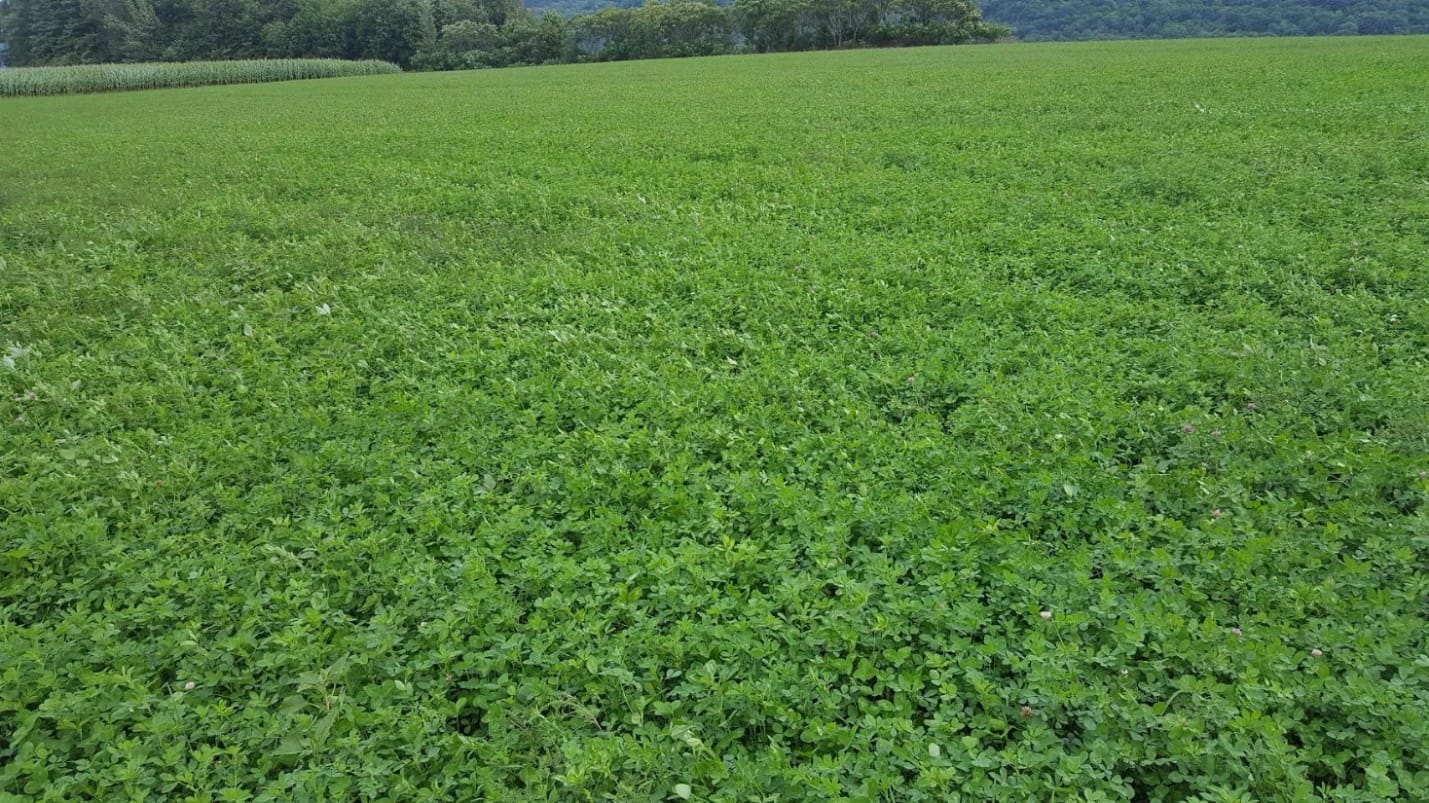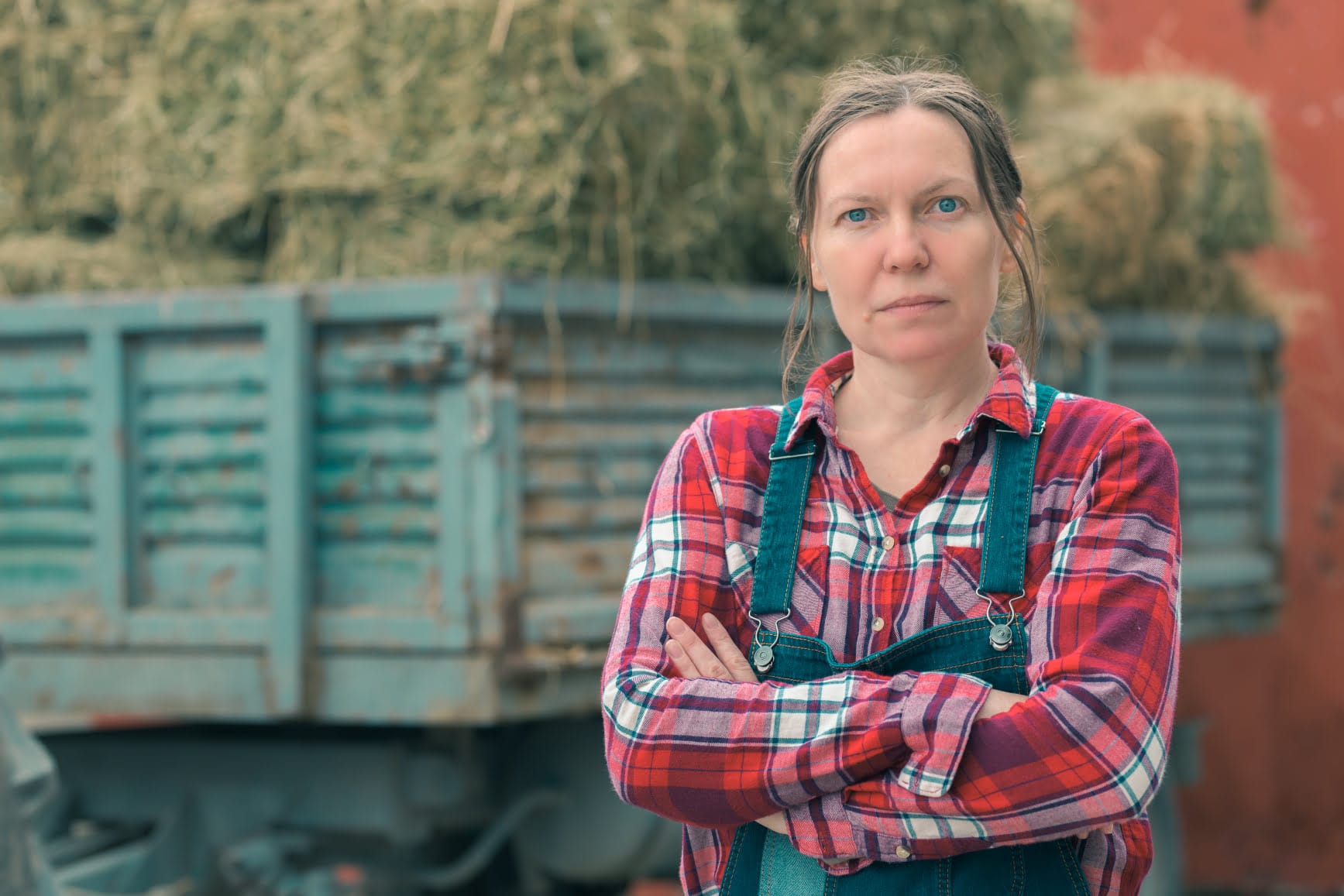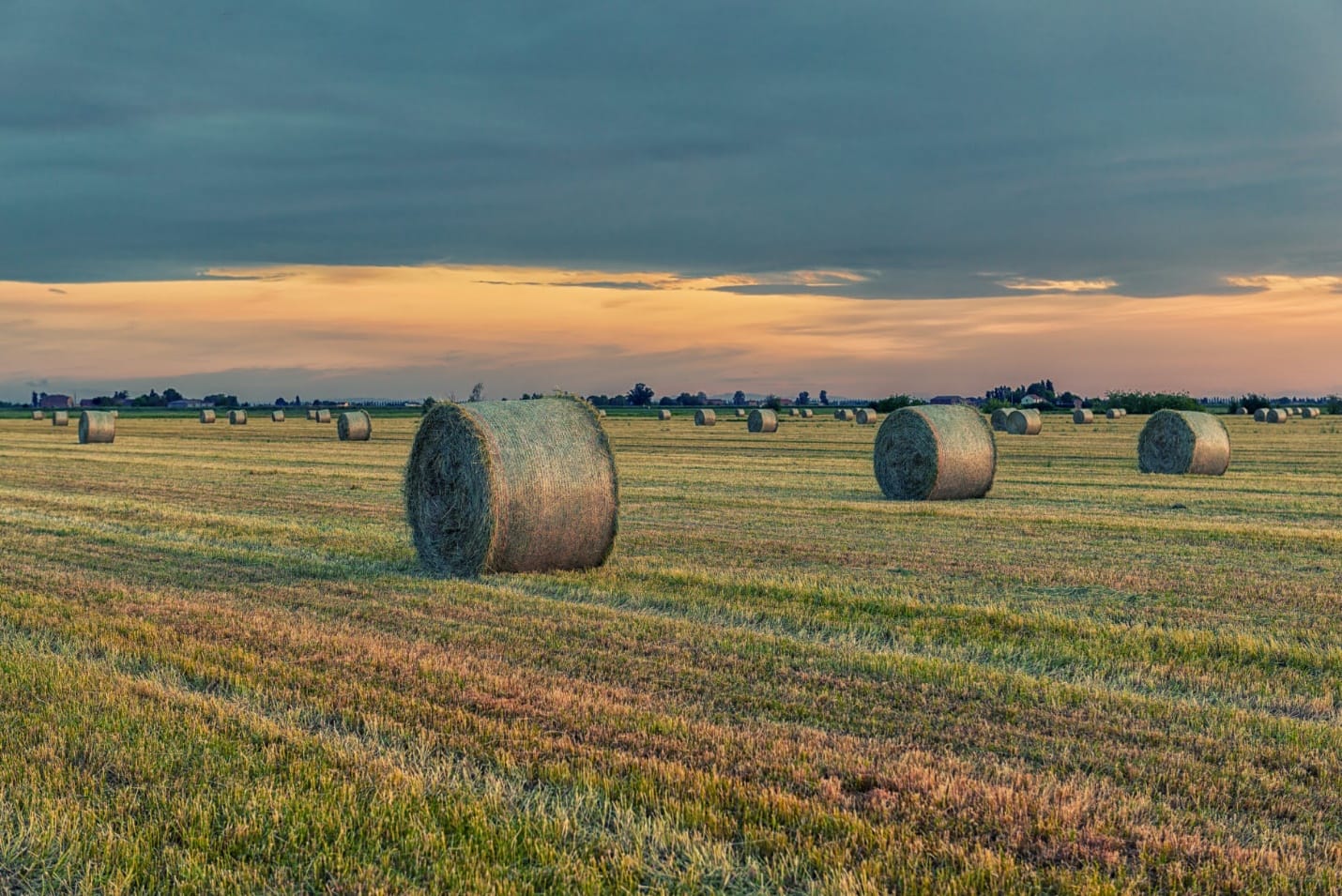Lucerne isn’t called the Queen of Forage for nothing!
Lucerne is an excellent forage for dairy cattle as it packs a powerful punch of both nutrients and easily digestible feed that is cost-effective as well.
Lucerne can be grazed directly or it can be harvested as hay, haylage, silage or baleage.
In this article, we’re going to talk all about Lucerne and why it’s a favourite with both cows and farmers alike!
Lucerne is a high-yielding, high-quality, deep-rooted, versatile crop. But is Lucerne right for your farm?
We’ll explore the answer to that question with lots of different perspectives which will hopefully help you make the choice.

High yield:
The excellent high yield of Lucerne, when managed well, can be converted to high levels of animal production per acre.
Milk production per acre and animal has also been known to be high when grazing Lucerne.
With beef cattle, total gains over a season have shown results of about 200 kg – 300 kg per acre in many research studies.
Drought tolerance:
Lucerne is also tolerant to drought, thanks to its deep-rooted system. And while it may not experience maximum growth during summer droughts, it does serve the purpose of a good summer pasture.
This is even more helpful during a period of extreme drought when cool-season grasses become dormant.
Versatility:
A good characteristic of pasture plants is, of course, versatility. Their capability to transform into different avatars based on the needs of the cows and the season. Lucerne is ideal on farms in the form of direct grazing, hay and silage.
It provides quality feed during early spring growth, and as we mentioned earlier, animals can graze on Lucerne during mid-summer, when the other cool-season grasses turn out to be less productive.
Extending productivity:
Did you know that you can extend the productive life of some of your Lucerne hay fields?
In old Lucerne fields that have been used for hay but where the stand has either become lost or weedy, Lucerne can help boost the stand’s life for even a year or more.
Also, when cows graze on this, it helps rejuvenate some of the stands by reducing grass and weed competition.
Research has shown that when Lucerne stands decline to lower than 3 plants per sq ft, optimum hay yields are hard to achieve.
In beef farming, beef gains have been made on Lucerne stands that are as few as 1 plant per square foot. However, in such a situation, the productivity per acre does tend to suffer.
Lower cost:
We’ve always encouraged direct grazing practices. After all, mother nature did intend cows to be right where they belong – on pasture.
40% of the cost of producing Lucerne hay is the high amount of expenditure spent on machinery and equipment. If you follow a total grazing system, this cost can either be completely done away with or at least minimized to a great extent.

When natural grazing takes place on a farm, plant nutrients are returned to the soil as dung and urine.
In fact, over 80% of the nutrients ingested are put back into the soil via dung and urine. Your yearly fertiliser needs would end up being much lower than in a situation where plant nutrients are removed from a field as hay.
Lucerne is also the highest nitrogen-fixing forage legume. As nitrogen prices get higher and higher, this Lucerne-fixed nitrogen will help you lower costs even more. However, it does need a pH of 6.5 to 7.0 and may require annual applications of potassium, phosphorous and other nutrients.
Grazing management practices:
So we’ve covered that Lucerne can either be planted in pure of mixed stands with cool-season grasses like orchardgrass or tall fescue for grazing, or for harvesting as forage for when grazing is not possible.
These fields can be harvested for hay when there is excess pasture, and then re-enter the grazing system when the growth of the other forages drop.

High-quality grazing:
Lucerne and Lucerne-grass pastures can give you the highest quality when it is grazed at the proper stage of maturity. Lucerne is great for grazing higher performance cattle like stockers, grass-finished cattle and lactating dairy cows.
Gap-filler:
Lucerne can be used for direct grazing through the entire grazing season. Cool-season grasses like tall fescue grow best only at temperatures of about 20 degrees Celsius to 30 degrees Celsius.
Lucerne on the other hand grows best when the temperatures get warmer, which is between 23 degrees Celsius to 32 degrees Celsius. This in turn helps in extending the grazing season.
Graze and rest:
Lucerne and Lucerne-grass stand need to be rotationally grazed where the plants are grazed at first a height of 10 – 16 inches and then, the cattle have to be removed from the pasture when the plants are grazed to no less than a height of 3 inches. If the plants are allowed to rest for 25 to 40 days, they will regrow nicely.
After this rest period, the plants can be grazed directly, or harvested for cattle feed.
Lucerne regrowth happens from the crown of the plant, not the stem – which is why grazing to this height is important to increase utilisation of the plant.
Also, you want to make sure that the plant is small enough so that cows get a good mouthful of the entire plant, stems and leaves included, and not just the top of the plant.
Cattle must not be allowed to graze Lucerne plants for longer than 5 – 7 days since new shoots start developing after this 5-7 day period.
The top of the leaves is high in protein with a little bit of fibre while the stem is lower in protein but high in fibre. So, it’s important to make sure that your cows end up consuming the plant in its entirety, to minimise the risk of bloat.
As long as your cows are rotated every 3 days, you can easily avoid bloat risk.
Lucerne in creep grazing:
Creep grazing is when smaller animals are allowed to go or creep over sneakily, from one pasture to another to increase their gains.
Hence the name – creep grazing (no offense to the cute calves meant). For beef farmers, allowing access to Lucerne-pastures for calves can help increase their gains. You’ll only need a small plot of acreage for creep grazing.
Incorporate grass in Lucerne stands:
Incorporating grasses in stands of Lucerne can reduce soil erosion, weed infestation, hoof damage and bloat too. Stands that contain more than 50% grass have a lower risk of bloat but on the other hand, pure stands of Lucerne can be grazed confidently with little or close to no risks for bloat.
Managing bloat risk:
Proper grazing management practices that are firmly in place can easily eliminate all risk for bloat. A few things to remember are:
- Move cattle to pastures only after the morning dew has dried and cattle have grazed in the morning.
- Do not put very hungry cattle on pastures.
- Do not graze immature Lucerne.
- Observe your cattle thoroughly.
Cattle and stand life:
When it is wet and muddy, cattle should be removed from Lucerne fields to protect the crown of the plants from getting damaged by cow hooves that tend to stomp all over it. Cattle should instead be placed on a grassy lot that has a good base.
Grazing of pure Lucerne stands has the potential to double the net farm income generated from mixed grass-legume pastures. And while bloat is something that tends to scare a lot of farmers away, all you need is good grazing management practices to make the most out of your Lucerne and naturally help it boost your farm into a pasture that rains profits!
We hope you found this article useful. Please do check out our other articles on grazing management practices.
Until we meet again, happy farming!
- The Dedicated Team of Pasture.io, 2021-01-04